This article's lead section may be too short to adequately summarize the key points.(September 2024) |
| Millennium |
|---|
| 2nd millennium |
| Centuries |
| Decades |
| Years |
| Categories |
The 1710s decade ran from January 1, 1710, to December 31, 1719.
This article's lead section may be too short to adequately summarize the key points.(September 2024) |
| Millennium |
|---|
| 2nd millennium |
| Centuries |
| Decades |
| Years |
| Categories |
The 1710s decade ran from January 1, 1710, to December 31, 1719.
For dates within Great Britain and the British Empire, as well as in the Russian Empire, the "old style" Julian calendar was used in 1715, and can be converted to the "new style" Gregorian calendar (adopted in the British Empire in 1752 and in Russia in 1923) by adding 11 days.

1710











1711












1712









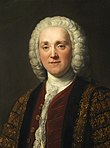




1713

















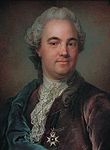
1714

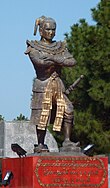

1715



1716 * January 1 – Joshua Loring, colonial American captain in British service (d. 1781), Gaspar de Portola, Spanish California Expedition (d.1786)


1717


1718

1719






















1710

1711


1712



1713





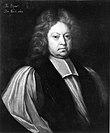







1714







1715



1716 * January 1 – William Wycherley, English playwright (b. 1641) [134]


1717


1718


1719



















The 1640s decade ran from January 1, 1640, to December 31, 1649.

1707 (MDCCVII) was a common year starting on Saturday of the Gregorian calendar and a common year starting on Wednesday of the Julian calendar, the 1707th year of the Common Era (CE) and Anno Domini (AD) designations, the 707th year of the 2nd millennium, the 7th year of the 18th century, and the 8th year of the 1700s decade. As of the start of 1707, the Gregorian calendar was 11 days ahead of the Julian calendar, which remained in localized use until 1923.
The 1700s decade ran from January 1, 1700, to December 31, 1709.

1690 (MDCXC) was a common year starting on Sunday of the Gregorian calendar and a common year starting on Wednesday of the Julian calendar, the 1690th year of the Common Era (CE) and Anno Domini (AD) designations, the 690th year of the 2nd millennium, the 90th year of the 17th century, and the 1st year of the 1690s decade. As of the start of 1690, the Gregorian calendar was 10 days ahead of the Julian calendar, which remained in localized use until 1923.
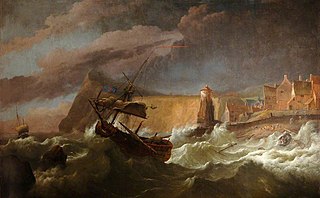
1691 (MDCXCI) was a common year starting on Monday of the Gregorian calendar and a common year starting on Thursday of the Julian calendar, the 1691st year of the Common Era (CE) and Anno Domini (AD) designations, the 691st year of the 2nd millennium, the 91st year of the 17th century, and the 2nd year of the 1690s decade. As of the start of 1691, the Gregorian calendar was 10 days ahead of the Julian calendar, which remained in localized use until 1923.

1695 (MDCXCV) was a common year starting on Saturday of the Gregorian calendar and a common year starting on Tuesday of the Julian calendar, the 1695th year of the Common Era (CE) and Anno Domini (AD) designations, the 695th year of the 2nd millennium, the 95th year of the 17th century, and the 6th year of the 1690s decade. As of the start of 1695, the Gregorian calendar was 10 days ahead of the Julian calendar, which remained in localized use until 1923.
The 1690s decade ran from January 1, 1690, to December 31, 1699.
The 1630s was a decade that began on January 1, 1630, and ended on December 31, 1640.
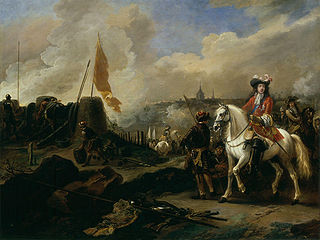
1685 (MDCLXXXV) was a common year starting on Monday of the Gregorian calendar and a common year starting on Thursday of the Julian calendar, the 1685th year of the Common Era (CE) and Anno Domini (AD) designations, the 685th year of the 2nd millennium, the 85th year of the 17th century, and the 6th year of the 1680s decade. As of the start of 1685, the Gregorian calendar was 10 days ahead of the Julian calendar, which remained in localized use until 1923.

1710 (MDCCX) was a common year starting on Wednesday of the Gregorian calendar and a common year starting on Sunday of the Julian calendar, the 1710th year of the Common Era (CE) and Anno Domini (AD) designations, the 710th year of the 2nd millennium, the 10th year of the 18th century, and the 1st year of the 1710s decade. As of the start of 1710, the Gregorian calendar was 11 days ahead of the Julian calendar, which remained in localized use until 1923.

1714 (MDCCXIV) was a common year starting on Monday of the Gregorian calendar and a common year starting on Friday of the Julian calendar, the 1714th year of the Common Era (CE) and Anno Domini (AD) designations, the 714th year of the 2nd millennium, the 14th year of the 18th century, and the 5th year of the 1710s decade. As of the start of 1714, the Gregorian calendar was 11 days ahead of the Julian calendar, which remained in localized use until 1923.
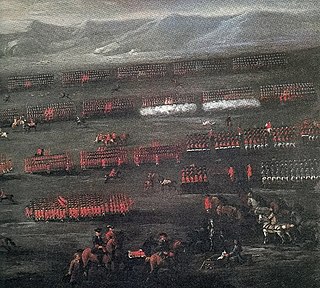
1715 (MDCCXV) was a common year starting on Tuesday of the Gregorian calendar and a common year starting on Saturday of the Julian calendar, the 1715th year of the Common Era (CE) and Anno Domini (AD) designations, the 715th year of the 2nd millennium, the 15th year of the 18th century, and the 6th year of the 1710s decade. As of the start of 1715, the Gregorian calendar was 11 days ahead of the Julian calendar, which remained in localized use until 1923.

1719 (MDCCXIX) was a common year starting on Sunday of the Gregorian calendar and a common year starting on Thursday of the Julian calendar, the 1719th year of the Common Era (CE) and Anno Domini (AD) designations, the 719th year of the 2nd millennium, the 19th year of the 18th century, and the 10th and last year of the 1710s decade. As of the start of 1719, the Gregorian calendar was 11 days ahead of the Julian calendar, which remained in localized use until 1923.

1713 (MDCCXIII) was a common year starting on Sunday of the Gregorian calendar and a common year starting on Thursday of the Julian calendar, the 1713th year of the Common Era (CE) and Anno Domini (AD) designations, the 713th year of the 2nd millennium, the 13th year of the 18th century, and the 4th year of the 1710s decade. As of the start of 1713, the Gregorian calendar was 11 days ahead of the Julian calendar, which remained in localized use until 1923.

1712 (MDCCXII) was a leap year starting on Friday of the Gregorian calendar and a leap year starting on Tuesday of the Julian calendar, the 1712th year of the Common Era (CE) and Anno Domini (AD) designations, the 712th year of the 2nd millennium, the 12th year of the 18th century, and the 3rd year of the 1710s decade. As of the start of 1712, the Gregorian calendar was 11 days ahead of the Julian calendar, which remained in localized use until 1923.

1708 (MDCCVIII) was a leap year starting on Sunday of the Gregorian calendar and a leap year starting on Thursday of the Julian calendar, the 1708th year of the Common Era (CE) and Anno Domini (AD) designations, the 708th year of the 2nd millennium, the 8th year of the 18th century, and the 9th year of the 1700s decade. As of the start of 1708, the Gregorian calendar was 11 days ahead of the Julian calendar, which remained in localized use until 1923.

1709 (MDCCIX) was a common year starting on Tuesday of the Gregorian calendar and a common year starting on Saturday of the Julian calendar, the 1709th year of the Common Era (CE) and Anno Domini (AD) designations, the 709th year of the 2nd millennium, the 9th year of the 18th century, and the 10th and last year of the 1700s decade. As of the start of 1709, the Gregorian calendar was 11 days ahead of the Julian calendar, which remained in localized use until 1923.

1706 (MDCCVI) was a common year starting on Friday of the Gregorian calendar and a common year starting on Tuesday of the Julian calendar, the 1706th year of the Common Era (CE) and Anno Domini (AD) designations, the 706th year of the 2nd millennium, the 6th year of the 18th century, and the 7th year of the 1700s decade. As of the start of 1706, the Gregorian calendar was 11 days ahead of the Julian calendar, which remained in localized use until 1923.

1701 (MDCCI) was a common year starting on Saturday of the Gregorian calendar and a common year starting on Wednesday of the Julian calendar, the 1701st year of the Common Era (CE) and Anno Domini (AD) designations, the 701st year of the 2nd millennium, the 1st year of the 18th century, and the 2nd year of the 1700s decade. As of the start of 1701, the Gregorian calendar was 11 days ahead of the Julian calendar, which remained in localized use until 1923.

1693 (MDCXCIII) was a common year starting on Thursday of the Gregorian calendar and a common year starting on Sunday of the Julian calendar, the 1693rd year of the Common Era (CE) and Anno Domini (AD) designations, the 693rd year of the 2nd millennium, the 93rd year of the 17th century, and the 4th year of the 1690s decade. As of the start of 1693, the Gregorian calendar was 10 days ahead of the Julian calendar, which remained in localized use until 1923.